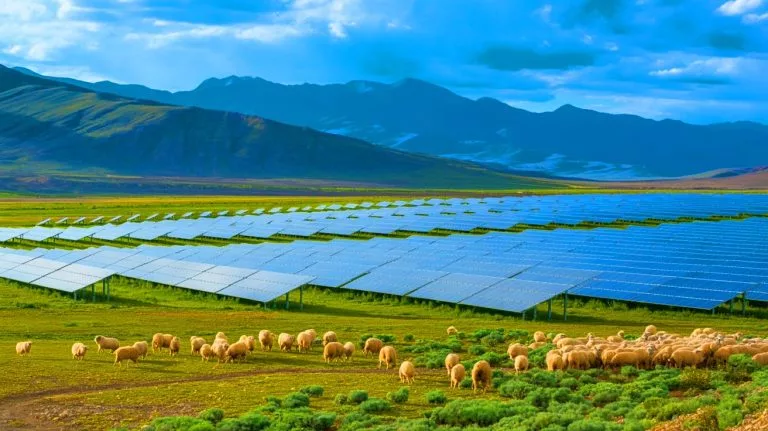| IN A NUTSHELL |
|
In the arid northwestern region of China, an ambitious solar farm is transforming both the landscape and the local ecological balance. Spanning hundreds of square miles, this vast array of photovoltaic panels not only harnesses the sun’s rays to generate electricity but also mitigates soil erosion, encourages grass growth, and attracts herds of sheep that help maintain this new ecosystem. By altering the environment in such profound ways, the solar farm is creating a ripple effect that extends beyond its immediate energy output.
Solar Energy’s Role in Desert Stabilization
In Qinghai province, a groundbreaking energy project is reshaping a landscape long defined by aridity. On 235 square miles of the Tibetan Plateau, uninterrupted rows of solar panels now constitute the world’s largest photovoltaic farm. This vast installation, set to house over seven million modules, will ultimately generate electricity for five million households. The sheer scale of this project is a testament to China’s commitment to renewable energy.
The panels act as windbreaks, curbing erosion and slowing sand encroachment. By casting shadows, they reduce soil moisture evaporation, fostering conditions conducive to the growth of grasses and small shrubs. This artificial microclimate has sparked the emergence of vegetation in a historically drought-stricken area, attracting native animal species back to the region. The interaction between solar technology and the environment here illustrates how renewable energy developments can have multifaceted impacts.
The Ecological Impact of Solar Farms
The ecological implications of the Qinghai solar farm extend far beyond energy production. By stabilizing the soil and promoting plant growth, the project enhances local biodiversity. The return of vegetation provides habitats and food sources for wildlife, which had dwindled due to long-standing desertification. In turn, these ecological changes contribute to a more balanced and resilient ecosystem.
The presence of sheep, which graze on the new grasslands, is an integral part of this ecological transformation. These animals help maintain the health of the vegetation cover, preventing overgrowth and promoting nutrient cycling. The symbiotic relationship between the solar farm and its environment underscores a broader trend in renewable energy projects that consider ecological benefits alongside their primary function of energy generation.
Challenges and Considerations in Renewable Projects
While the benefits of the Qinghai solar farm are evident, challenges remain in integrating such large-scale projects into existing landscapes. The construction and maintenance of extensive solar arrays can disrupt local ecosystems and communities if not carefully managed. Furthermore, balancing energy needs with ecological preservation requires ongoing monitoring and adaptation.
Environmental assessments and community engagement are crucial to the long-term success of renewable energy projects. By involving local stakeholders in the planning and implementation phases, developers can ensure that projects meet energy demands while respecting and enhancing the natural environment. The Qinghai solar farm serves as a model for how thoughtful planning can mitigate potential adverse effects.
The Future of Renewable Energy in Arid Regions
The success of the Qinghai solar farm highlights the potential for renewable energy projects to thrive in arid regions. As global demand for sustainable energy solutions grows, similar initiatives could be deployed in other desert areas worldwide. The combination of energy generation and ecological restoration presents a compelling case for expanding solar infrastructure in regions traditionally viewed as inhospitable.
However, the scalability of such projects will depend on technological advancements and policy support. Continued investment in research and development is essential to improve the efficiency and cost-effectiveness of solar technologies. Moreover, international collaboration can facilitate the exchange of best practices and innovations, driving the global transition toward renewable energy.
As the Qinghai solar farm continues to evolve, it poses a significant question: How can other regions harness renewable energy to simultaneously meet energy needs and foster environmental resilience? The answer may lie in the delicate balance between technology, ecology, and community involvement.
Did you like it? 4.7/5 (21)








Wow, 5 million households powered and sheep herding too? That’s baaa-rilliant! 🐑
Wow, 5 million households! That’s a massive impact. How do they manage the maintenance of such a large area?
How do the sheep contribute to the ecosystem exactly? Are there any other animals involved?
I’ve heard sheep are great for grass management, but does this affect their wool quality in any way? 🐑
This is a great example of renewable energy in action. Thank you for sharing!